Helen Walsh's Blog, page 5
March 8, 2021
Letterbox
When I was in my 20s, my mom and I set out on a road trip to attend the annual Santa Barbara Writers Conference, held in Montecito, California, a small and wealthy community now home to Meghan Markle and Prince Harry, not to mention the Queen (Oprah Winfrey).
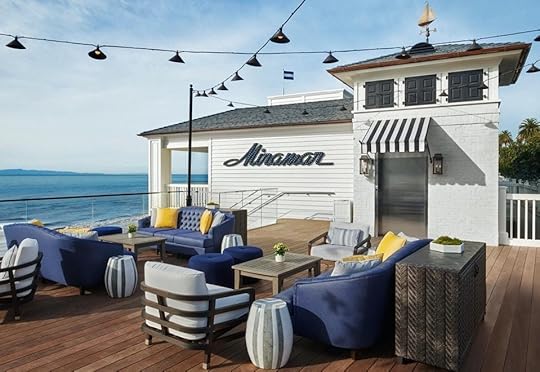 a.image2.image-link.image2-406-589 { padding-bottom: 68.82168925964547%; padding-bottom: min(68.82168925964547%, 405.3597497393118px); width: 100%; height: 0; } a.image2.image-link.image2-406-589 img { max-width: 589px; max-height: 405.3597497393118px; }
a.image2.image-link.image2-406-589 { padding-bottom: 68.82168925964547%; padding-bottom: min(68.82168925964547%, 405.3597497393118px); width: 100%; height: 0; } a.image2.image-link.image2-406-589 img { max-width: 589px; max-height: 405.3597497393118px; } We’d seen an advertisement in Writer’s Digest magazine and were drawn by its list of speakers, as well as the ‘regulars’ who hung out at the conference such as Ray Bradbury, Charles Schulz and Elmore Leonard.
Afraid of flying, my mom drove everywhere. Off we set in her Toyota Corolla for the five-day journey. To say we had different approaches to car drives is to understate the situation.
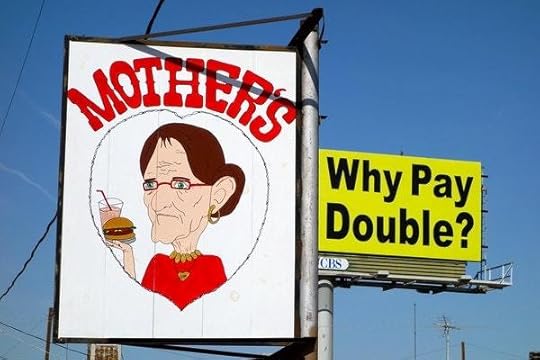 a.image2.image-link.image2-354-530 { padding-bottom: 66.66666666666666%; padding-bottom: min(66.66666666666666%, 353.3333333333333px); width: 100%; height: 0; } a.image2.image-link.image2-354-530 img { max-width: 530px; max-height: 353.3333333333333px; }
a.image2.image-link.image2-354-530 { padding-bottom: 66.66666666666666%; padding-bottom: min(66.66666666666666%, 353.3333333333333px); width: 100%; height: 0; } a.image2.image-link.image2-354-530 img { max-width: 530px; max-height: 353.3333333333333px; } I like the idea of wide-open trails a whole lot more than the reality of sitting in a car, day after endless day, while long drives are as natural to my mom as the cigarettes she smoked, windows rolled down as I coughed up resentment in the passenger seat.
My fingers would twitch toward the radio dial; she’d suffer in silence for a song or two, before turning it off. “Let’s have some peace and quiet,” was a phrase I came to resent, as much as the ‘cheap and cheerful’ diner meal, which in those days had no vegetarian options unless you were happy to pick the bacon off your Dennys BLT.
My mother’s authority was indisputable, so she won every decision. It would take me another ten years to realize – and leverage – the 50% shared Scottish stubbornness gene.
We set off on a diagonal from Detroit, through Illinois and Missouri, skirting the top of Oklahoma and Texas, into the glorious South-West.
 a.image2.image-link.image2-318-1394 { padding-bottom: 22.812051649928264%; padding-bottom: min(22.812051649928264%, 318px); width: 100%; height: 0; } a.image2.image-link.image2-318-1394 img { max-width: 1394px; max-height: 318px; }
a.image2.image-link.image2-318-1394 { padding-bottom: 22.812051649928264%; padding-bottom: min(22.812051649928264%, 318px); width: 100%; height: 0; } a.image2.image-link.image2-318-1394 img { max-width: 1394px; max-height: 318px; } My mom and Roger, her long-term partner, drove various routes from Brampton to LA over the years; he liked to buy old British sportscars in California (no winter road salt = no rust) and drive them back to sell.
I’d once made the trek with Roger when I was fourteen, learning to drive really fast on a go-kart racetrack in LA, memories of which came flooding back as I binge-watched Formula One on Netflix the past couple weeks.
Given my age, we didn’t bring back a second car, but Roger had previously taught me to drive in his MGTB, so I took driving turns through the long, empty patches of dessert past TheDay of the Triffids plants that stared at us with ill-intent.
 a.image2.image-link.image2-451-601 { padding-bottom: 74.9034749034749%; padding-bottom: min(74.9034749034749%, 450.16988416988414px); width: 100%; height: 0; } a.image2.image-link.image2-451-601 img { max-width: 601px; max-height: 450.16988416988414px; }
a.image2.image-link.image2-451-601 { padding-bottom: 74.9034749034749%; padding-bottom: min(74.9034749034749%, 450.16988416988414px); width: 100%; height: 0; } a.image2.image-link.image2-451-601 img { max-width: 601px; max-height: 450.16988416988414px; } My mom and I are both fans of Navajo jewellery and design, so there was never any disagreement when the car slid off the road in the direction of any and all artisan shops, or about taking extra time to explore the architecture and galleries in Santa Fe, or the breathtaking drive around the Grand Canyon.
West from there into Vegas for a crazed 30 hours playing the slots and seeing the sights, before channeling our inner Hunter S Thompson and motoring down the I-15 into Santa Barbara, passing endless white crosses where unlucky drivers had met their final match. “I’m Leaving Las Vegas //Lights so bright //Palms sweat, blackjack //On a Saturday Night. . .”
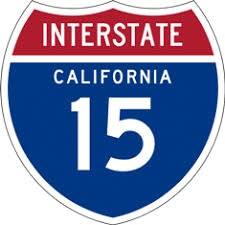 a.image2.image-link.image2-203-203 { padding-bottom: 100%; padding-bottom: min(100%, 203px); width: 100%; height: 0; } a.image2.image-link.image2-203-203 img { max-width: 203px; max-height: 203px; }
a.image2.image-link.image2-203-203 { padding-bottom: 100%; padding-bottom: min(100%, 203px); width: 100%; height: 0; } a.image2.image-link.image2-203-203 img { max-width: 203px; max-height: 203px; } The Santa Barbara Writers Conference was held at the famed Miramar Hotel (until 2000 when the hotel closed). On a budget, we stayed at a nearby motel, where one morning I memorably slept through an earthquake of 6.8 magnitude while my mother clung to a doorframe and yelled at me to wake the fuck up.
We became fast friends with two women from South Carolina. From day to night there were talks, and workshops and socializing, and we loved every minute of it.
And suddenly a week had passed, and it was time to leave, this time across the bottom of the US, the long, wide slog that is Southern Texas where we lasted one hour in our motel room before convincing each other that the mystery movement at the top of the curtains had to be a giant snake.
We high-tailed it out of there, driving all night past ghostly little deer in the headlights to collapse in a heap in a New Orleans motel late the following afternoon.
I still prefer train journeys to cars, but I adore roadie movies, from the quirky (Little Miss Sunshine), to the female buddy movies (Thelma and Louise) to the off-beat (early Jim Jarmusch).
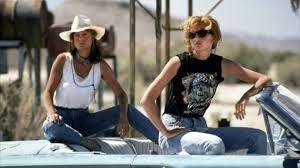 a.image2.image-link.image2-340-606 { padding-bottom: 56.00000000000001%; padding-bottom: min(56.00000000000001%, 339.36px); width: 100%; height: 0; } a.image2.image-link.image2-340-606 img { max-width: 606px; max-height: 339.36px; }
a.image2.image-link.image2-340-606 { padding-bottom: 56.00000000000001%; padding-bottom: min(56.00000000000001%, 339.36px); width: 100%; height: 0; } a.image2.image-link.image2-340-606 img { max-width: 606px; max-height: 339.36px; } But I’ll long treasure memories of that road trip with my mom, especially now as her memories slide.
She came back from that LA trip to take the Humber School for Writers correspondence course, find an agent, publish a novel at age 65. The intensity of caring for Roger’s early on-set Alzheimer’s followed by her own health problems, robbed her of the opportunity to continue writing.
But, despite the failing cognition, she still remembers she’s a published author and that we had a grand party to celebrate, and just how hard it was to achieve her dream.
When I mention my upcoming novel, Pull Focus, she’s newly surprised and faintly accusatory – “why is this the first I’m hearing of it?” But she’s always delighted at the news. I looking forward to receiving the print ARCs soon, so I can put a copy – with its dedication to her – in her hands and says thanks again, mom. I love you.
I might have slept through that LA earthquake, but the trip shook the foundations of my life in ways it would take me a few years to fully appreciate.
I co-launched a literary magazine, McGill Street Magazine, with fellow attendees from a writing workshop taught by Austin Clarke, who so kindly invited us to meet at his house. (Yes, on McGill Street.)
I also joined the Thursday Group, a writing group that grew out of UofT, made an entire new group of friends, broke up with my live-in partner, and slowly took one step after another – magazine publisher, programmer, writer, producer – which found me eventually back in LA for a while, all those years after my go-karting extravaganza. California captured my imagination young and has never let go.
A through-line should connect the elements in a story to each other, and ultimately to the ending which needs to be, as Aristotle said, surprising yet inevitable. However circuitous the journey, each step is grounded in the beginning.
We’ve all heard the saying that if your passion hasn’t driven you to achieve your goal by the age of thirty, you never will. Such crap. The reality is people have all kinds of responsibilities that take up space, and starting lines are staggered.
That’s certainly true for women with children, people who emigrate from one country to another, people who are poor, people who write in a language that’s not their first. In short, all but the privileged few, and thank goodness for that. A lifetime of experience brings richness and texture to writing, and to art.
On this International Women’s Day, I wish us all a glorious exploration of personhood and self-expression, in whatever form that takes and at whatever age.
The lasting memory from the Santa Barbara Writers’ Conference came from a talk by writer Sue Grafton. She shared letters she wrote to her father, in which she anguished that one novel manuscript after another was being rejected (although she was successful as a screenwriter).
“Write the story that moves you, that brings you excitement on the page,” he told her. “Not something to seek approval from the writing community.”
Her next attempt was A is for Alibi. Her books would go on to spend an aggregate of 400 weeks on the NYT Bestseller list and sell millions of copies. California dreaming, indeed.
Festivals.Stratford Festival has announced they intend to produce plays with real live audiences (yay!). They’re building large, open-sided canopies on the terrace of Festival Theatre and the new Tom Patterson Theatre. Seating will be in pods, able to expand based on public health guidelines (and audience confidence). Performances will also be streamed online – ultimately the future of eventing, I think, given the accessibility issues that streaming helps ameliorate. Stratford’s move hearkens back to their early days, when the first seasons were presented under a tent.
The London Book Fair, scheduled for June 29-July 1st, is hoping to host live events. Meanwhile, Jaipur Literature Festival, held an enormously successful virtual edition in February with over 50,000 people from across the world registering a total of 180 sessions and performances, with 450 speakers and performers from more than 20 countries.
TIFF is celebrating International women’s day all month long with movies from female filmmakers.
Pull Focus. a.image2.image-link.image2-181-320 { padding-bottom: 56.363636363636374%; padding-bottom: min(56.363636363636374%, 180.36363636363637px); width: 100%; height: 0; } a.image2.image-link.image2-181-320 img { max-width: 320px; max-height: 180.36363636363637px; } News & Gossips.
a.image2.image-link.image2-181-320 { padding-bottom: 56.363636363636374%; padding-bottom: min(56.363636363636374%, 180.36363636363637px); width: 100%; height: 0; } a.image2.image-link.image2-181-320 img { max-width: 320px; max-height: 180.36363636363637px; } News & Gossips.Firekeeper’s Daughter, the debut YA novel by Angeline Boulley described by the author as an “Indigenous Nancy Drew,” is generating huge buzz in advance of its March 16th release, with an initial print run of 250,000 copies and a film adaption by the Obamas for Netflix.
The idea first came to Boulley, 55, when she was 18 but it wasn’t until decades later that she carved out the time to write out the story. Like writers the world over, she was unhappy with her first draft, and began extensive rewrites while reading books about craft. A former Director of the Office of Indian Education at the U.S. Department of Education, she often wrote grant proposals and this process of needing to tell an engaging story helped develop her writing skills. Given how many fundraising proposals I’ve written myself over the years, I could relate!
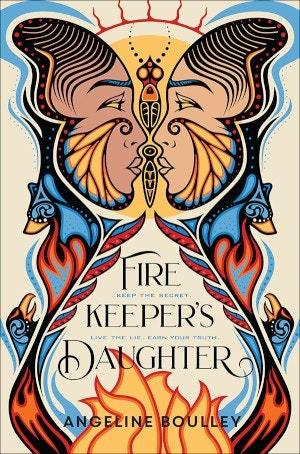 a.image2.image-link.image2-343-226 { padding-bottom: 151.33333333333331%; padding-bottom: min(151.33333333333331%, 342.0133333333333px); width: 100%; height: 0; } a.image2.image-link.image2-343-226 img { max-width: 226px; max-height: 342.0133333333333px; }
a.image2.image-link.image2-343-226 { padding-bottom: 151.33333333333331%; padding-bottom: min(151.33333333333331%, 342.0133333333333px); width: 100%; height: 0; } a.image2.image-link.image2-343-226 img { max-width: 226px; max-height: 342.0133333333333px; } **
Four book-to-screen adaptations picked up Golden Globes on February 28th including Nomadland (best dramatic film and best director for Chloé Zhao), The Queen’s Gambit (best miniseries or TV movie, and for best actress for Anya Taylor-Joy), The Mauritanian based on Mohamedou Ould Slahi’s 2015 prison memoir Guantánamo Diary (Jodie Foster for best supporting actress), and I Know This Much is True (Mark Ruffalo for best actor in TV limited series or movie).
**
I was delighted to receive my pre-ordered copy of Kate Quinn’s The Rose Code last week in the mail. I read her earlier novels The Huntress and The Alice Network around the clock until they were finished. Her newest book, about women code breakers in the secretive world of Bletchley Park, is receiving great reviews. I love historical novels, and her extensive research is evident in the writing.
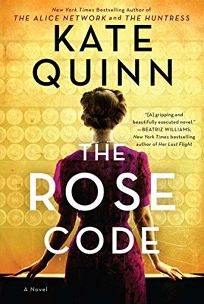 a.image2.image-link.image2-304-204 { padding-bottom: 149.01960784313727%; padding-bottom: min(149.01960784313727%, 304px); width: 100%; height: 0; } a.image2.image-link.image2-304-204 img { max-width: 204px; max-height: 304px; }
a.image2.image-link.image2-304-204 { padding-bottom: 149.01960784313727%; padding-bottom: min(149.01960784313727%, 304px); width: 100%; height: 0; } a.image2.image-link.image2-304-204 img { max-width: 204px; max-height: 304px; } **
Fifty Shades of Grey author E.L. James is leaving Vintage Books (part of the Penguin Random House conglomerate) to a new imprint at indie publisher Sourcebooks – and taking her bestselling books with her. The new imprint will focus on “entrepreneurial female authors…taking and keeping control of their own narrative.” Publisher Pamela Jaffe says, “we are inviting readers and influencers to take a decisive role in the creation of this new imprint."
**
And speaking of Penguin Random House, they’ve recently launched Ahab, a global online casting platform for voiceover actors. Originally used internally for creating audiobooks, PHR has opened it to the public; a one-stop shop to help with voiceover casting, whether that’s podcasts or animation or documentaries or videogames. More than 8,500 actors from 67 countries speaking 107 languages and in a total of 115 accents have already joined the platform; 66% of the current talent pool are union members. An interesting option given the recent proliferation of podcast creators.
Bye for now. Thank you for joining me for this fifth issue of Letterbox. Please:
February 22, 2021
Letterbox
Willesden in Zadie Smith’s White Teeth. Pepys Road in John Lanchester’s Capital. St James Park in Virginia Woolf’s Mrs Dalloway. Fitzrovia in Ian McEwan’s Saturday. Brick Lane by Monica Ali. Smithfield’s Market in Charles Dicken’s Great Expectations. The National Theatre in Bernadine Evaristo’s Girl, Woman, Other. Notting Hill – okay, not a book, but it’s a hard heart who doesn’t love that movie.
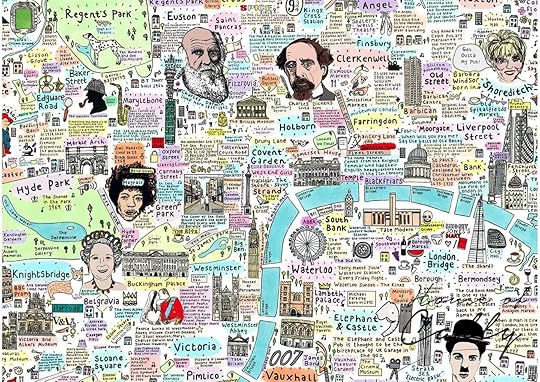 a.image2.image-link.image2-417-589 { padding-bottom: 70.76388888888889%; padding-bottom: min(70.76388888888889%, 416.7993055555556px); width: 100%; height: 0; } a.image2.image-link.image2-417-589 img { max-width: 589px; max-height: 416.7993055555556px; }
a.image2.image-link.image2-417-589 { padding-bottom: 70.76388888888889%; padding-bottom: min(70.76388888888889%, 416.7993055555556px); width: 100%; height: 0; } a.image2.image-link.image2-417-589 img { max-width: 589px; max-height: 416.7993055555556px; } Cities are fertile terrain for books and movies. They’re inherently dramatic, people tumbled on top of each other, chasing survival or wealth, love or escape, buzz or tranquility, safety or disruption.
In big cities, hundreds of languages are spoken across a dizzying array of cultural backgrounds, residents jostling for real estate on the sidewalk or a breath of clean air.
I first visited London in my 20s. I stepped off the plane and arrived home.
The sudden affinity was startling; although the birthplace of my three sisters, it was not mine. As I took the Heathrow Express to Paddington, I thought about the many books I’d read set in the city, growing up in my book-mad family, at university studying English Lit and working in/around publishing.
London belonged to me; perhaps not by birth or residency, but in the psycho-geographic pages of my mind, I could follow its lanes and bi-ways, map its parks and plazas, taste its Chip Butties and Chicken Tikka Masala.
 a.image2.image-link.image2-324-538 { padding-bottom: 60.16666666666667%; padding-bottom: min(60.16666666666667%, 323.69666666666666px); width: 100%; height: 0; } a.image2.image-link.image2-324-538 img { max-width: 538px; max-height: 323.69666666666666px; }
a.image2.image-link.image2-324-538 { padding-bottom: 60.16666666666667%; padding-bottom: min(60.16666666666667%, 323.69666666666666px); width: 100%; height: 0; } a.image2.image-link.image2-324-538 img { max-width: 538px; max-height: 323.69666666666666px; } My love affair with London has only increased over the years. Given the smallest glimmer of an excuse, my rollie bag and I are ready to plunk our wheels up on Air Canada’s day flight to Heathrow, humming Leaving on a Jet Plane all the way.
A friend once said he preferred Paris to London with its flowered window boxes and manicured gardens, while London was grimy and convoluted. I thought to myself – well, yes, exactly. Life lived out in the open, warts and all, not hidden behind some polite façade.
Over the years, I’ve stayed most often at the Goodenough Club, part of Goodenough College, an international residence for postgraduate students from London universities and around the world. It’s a fascinating cross-cultural community.
The buildings now occupied by the club were designed as a suite of town houses in the early 19th century on one of the city’s most beautiful garden squares. They became a nursing home during the Second World War (yes, like that episode of Downton Abbey) and were later entirely renovated by Goodenough College to provide guest and visitor accommodation.
Walk with me, as we leave room 4602, a lovely little cocoon tucked into the club’s two-level courtyard mews, out the wide front doors and past the walled gardens, into the college proper. The porter buzzes us in, and up the stone steps we go into the Dining Hall where we line up for a full English breakfast. (A modified one for me, since I am decidedly less fond of pork products than the British.)
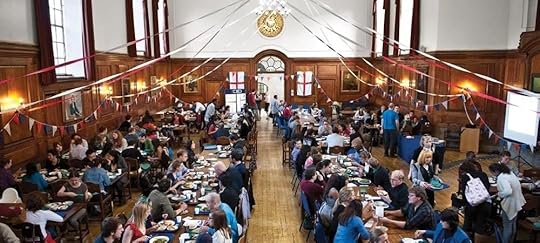 a.image2.image-link.image2-296-657 { padding-bottom: 44.99999999999999%; padding-bottom: min(44.99999999999999%, 295.65px); width: 100%; height: 0; } a.image2.image-link.image2-296-657 img { max-width: 657px; max-height: 295.65px; }
a.image2.image-link.image2-296-657 { padding-bottom: 44.99999999999999%; padding-bottom: min(44.99999999999999%, 295.65px); width: 100%; height: 0; } a.image2.image-link.image2-296-657 img { max-width: 657px; max-height: 295.65px; } I’ll grab the Guardian and the Observer from the racks, you grab the Times and the Independent. We’ll leave the Daily Mail on the floor under our feet where it belongs.
Later, as we groan under the weight of all that food and opinion, we’ll walk along Guildford Street and into Russell Square, strolling in the 14°c February weather. I’ll quote Dorothy Parker about the Bloomsbury Group – comprised of pairs who had affairs in squares – as we debate our plans for the day.
Shall we walk up to the British Library? Charles Dickens Museum? The University of London Senate House, inspiration for Orwell’s Ministry of Truth? But the sun is finally out, so instead we stroll past houses of famous writers: Virginia Wolf, W.B. Yeats, Charles Darwin, Oscar Wilde, Gertrude Stein, Isaac D’Israeli.
We turn right towards the British Museum – not to go inside, I’m too claustrophobic for the crowds – but instead across the street to Jarndyce, the antiquarian booksellers, to pick up their sumptuous book catalogues. Then we wander down to Covent Garden for an outdoor espresso, and west into Trafalgar Square with its giant flag outside Canada House to welcome us.
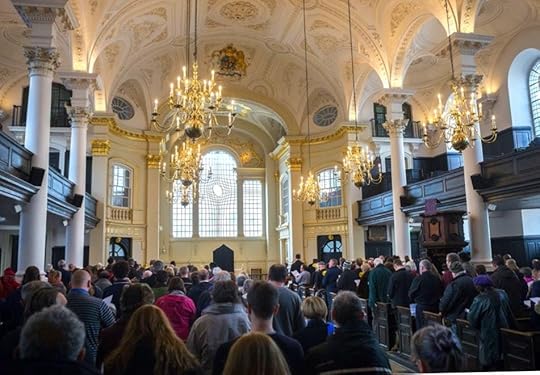 a.image2.image-link.image2-370-531 { padding-bottom: 69.50578338590957%; padding-bottom: min(69.50578338590957%, 369.0757097791798px); width: 100%; height: 0; } a.image2.image-link.image2-370-531 img { max-width: 531px; max-height: 369.0757097791798px; }
a.image2.image-link.image2-370-531 { padding-bottom: 69.50578338590957%; padding-bottom: min(69.50578338590957%, 369.0757097791798px); width: 100%; height: 0; } a.image2.image-link.image2-370-531 img { max-width: 531px; max-height: 369.0757097791798px; } It’s been a long walk, so we sit for a half-hour on the wooden pews of St Martin’s in the Fields to catch our breath, listening to a free classical concert, before shuffling along the twisty little laneways of Charing Cross and Leicester Square, through Cecil Court with its second-hand and specialty book shops, over to Foyle’s 37,000 square feet of written word splendour.
Welcome book lover, you are among friends.
Three hours later, we emerge, our arms heavy with bags. The day is disappearing; decisions need to be made.
Will we head north into Soho and a drink at The French House? West for late afternoon tea at Fortnum and Mason in Piccadilly or Momo in Mayfair? Across the bridge to Southbank Centre for an author reading and/or a play at the National Theatre or the Globe? All good choices and we’re in a wandering state of mind. . .
 a.image2.image-link.image2-344-536 { padding-bottom: 64.1025641025641%; padding-bottom: min(64.1025641025641%, 343.5897435897436px); width: 100%; height: 0; } a.image2.image-link.image2-344-536 img { max-width: 536px; max-height: 343.5897435897436px; }
a.image2.image-link.image2-344-536 { padding-bottom: 64.1025641025641%; padding-bottom: min(64.1025641025641%, 343.5897435897436px); width: 100%; height: 0; } a.image2.image-link.image2-344-536 img { max-width: 536px; max-height: 343.5897435897436px; } December 2, 2006, and I’m in London for a few days enroute to see the family in Cork. Gillian Licari, a political officer at the Canadian High Commission, invites me to a dinner that Donna Thomson and Jim Wright (the High Commissioner) are hosting at their residence for Adrienne Clarkson, who’d finished her term as Governor General the previous year.
Gillian knew I was planning to invite Tariq Ramadan, then a controversial and brilliant academic and thinker now awaiting trial in France, to speak at the Couchiching Conference. She promised to sit me beside him at the dinner so I could extend the invite. (I did. He came. And that’s a whole other story.)
Also in attendance was the actor Alan Rickman. As we enjoyed pre-dinner drinks, the chatter busily speculated about that day’s Liberal Leadership Convention, and front runners Stéphane Dion, Bob Rae, Michael Ignatieff and Gerard Kennedy.
Kennedy dropped out after the second ballet, throwing his support to Dion. Rae dropped out after the third, freeing his delegates to vote with their conscience. We waited for the final results, Blackberrys (remember those?) at the ready, until Jim informed us that Dion had triumphed.
Having lived twice in Toronto during film shoots, Rickman followed Canadian politics closely. He asked me, in that distinctive voice of his, “what do you think of Dion, he doesn’t seem to have much charisma?”
“I think they should have chosen Bob Rae,” I said. “But I’m sure Dion can do charisma.”
Rickman threw back his head and laughed heartily. “Do charisma,” he said and then teased me all night about my turn of phrase. I turned out to wrong about Dion, of course, but then again, I often am about politics.
Rickman was funny and gracious and charming, and we talked at length. It was very sad when he passed away. Truly, Madly, Deeply, in which he starred, has long been my go-to film when I need a good cry. It was also the directorial debut of Anthony Minghella, who would go on to write/direct two of my favourite literary adaptations, The English Patient and The Talented Mr Ripley, before passing away too young.
 a.image2.image-link.image2-385-577 { padding-bottom: 66.66666666666667%; padding-bottom: min(66.66666666666667%, 384.6666666666667px); width: 100%; height: 0; } a.image2.image-link.image2-385-577 img { max-width: 577px; max-height: 384.6666666666667px; }
a.image2.image-link.image2-385-577 { padding-bottom: 66.66666666666667%; padding-bottom: min(66.66666666666667%, 384.6666666666667px); width: 100%; height: 0; } a.image2.image-link.image2-385-577 img { max-width: 577px; max-height: 384.6666666666667px; } I’d founded Diaspora Dialogues (DD) in 2005 in partnership with Maytree, inspired by an anthology called Diaspora City. The book’s stories brought London to life through the eyes of writers who were immigrants and refugees to the UK.
Flash forward from that dinner, to the summer of 2008. I’d successfully pitched producing a DD showcase at Southbank Centre as part of the London Literary Festival. It featured Priscila Uppal, Vincent Lam, Rawi Hage (who won the IMPAC Dublin Literary Award that year) and the musicians LAL.
Donna Thomson and everyone at Canada House were incredibly supportive. They hosted a reception, helped with media outreach and made introductions to publishers and arts orgs with whom we’d later partner on projects.
I hope to be back in London soon, to walk across Trafalgar Square, and feel the tug of home as I look up at those red and white Maple Leafs blowing in the wind.
(Illustrated Map: House of Cally.)
Authenticate This.Like many people, I’m a sucker for books and films about the art world – art thefts, forgeries, lost paintings, all of it. I’ve seen Thomas Crown Affair (both versions) many times, love the tv series Lupin and will watch any movie with ‘art theft’ in its description, even if Rotten Tomatoes gives it a splat.
A few years, I was lucky to see a great talk at the Edinburgh Book Festival by Martin J Kemp, one of the world’s leading historians on the life and works of Leonardo Da Vinci and visualization in art and science. His stories about being called in to authenticate major artworks and about fraud were fascinating. He has a new book out this May, Visions of Heaven: Dante and the Art of Divine Light.
I’m eagerly awaiting the arrival of my pre-ordered Deceptions, Anna Porter’s new novel, a thriller set in the art world that races between Strasbourg, Budapest and Paris, due out in April.
 a.image2.image-link.image2-303-609 { padding-bottom: 49.74958263772955%; padding-bottom: min(49.74958263772955%, 302.974958263773px); width: 100%; height: 0; } a.image2.image-link.image2-303-609 img { max-width: 609px; max-height: 302.974958263773px; }
a.image2.image-link.image2-303-609 { padding-bottom: 49.74958263772955%; padding-bottom: min(49.74958263772955%, 302.974958263773px); width: 100%; height: 0; } a.image2.image-link.image2-303-609 img { max-width: 609px; max-height: 302.974958263773px; } Also on my spring radar screen is Cynthia Saltzman’s Plunder: Napoleon’s Theft of Veronese’s Feast (May), exploring history, art, commerce, politics, and Napoleon who looted Italian art with abandon to fill the Louvre.
And newly arrived at the house: TheGhost of Galileo by J.L Heilbron, which utilizes the presence of Galileo’s ghost in a painting in rural Dorset to explore the intellectual and cultural landscape of early Stuart England.
Pull FocusLast issue I promised to show the cover of my first novel, Pull Focus, but you’ll just have to wait in anticipation a little bit longer 🙂
The plan is to make the cover public in March once all the pre-buy links are finalized for the US and Canadian booksellers. (Many thanks to those who’ve asked me about how to order.) In the meantime, I’d love to chat about book club plans for those who might belong to one. Let me know, and I’ll be in touch with you directly.
And thanks also to the several people who commented on the staggered arrival of Letterbox (aka today instead of a week ago). Letterbox is twice monthly; March has five weeks, so it was either play with the date in in Feb or March. I’m very touched that you noticed!
News & Gossips.Wordfest. The Calgary-based festival has launched a new broadcast channel, Imagine on Air. These talks – both free and paid – offer an amazing lineup of speakers from Broadway critic Michael Biedel, to Nobel Laureate Kazuo Ishiguro to Globe and Mail health reporter André Picard. The talks are available both live and on demand. A terrific addition to the cultural landscape.
Vancouver Writers Fest launched Books & Ideas Audio, providing access to conversations presented in their seasons. Subscribe through Spotify, Apple Podcasts, Radio Public, Google Podcasts and Anchor.fm or download.
Meanwhile, the Toronto Public Library’s upcoming and archived talks are available for free HERE. Nalo Hopkinson tonight! And in March the inimitable New Yorker writer Masha Gessen, whom I once had the pleasure of presenting for an on-stage conversation in Toronto.
**
Hollywood news: The LA Times has a good piece on the boom 8 industry players behind Hollywood’s book adaptation boom. || Disney Television Studios has formed a new creative acquisitions department, focused on "identifying and securing the rights to upcoming and bestselling books, podcasts, news stories and other I.P." || Meanwhile, the long saga of the Writers Guild dispute ended when William Morris Endeavor (WME), the last major agency hold-out, reached a new franchise agreement with the unions, agreeing to end packaging and to cap their investment stake in production agencies to 20 percent.
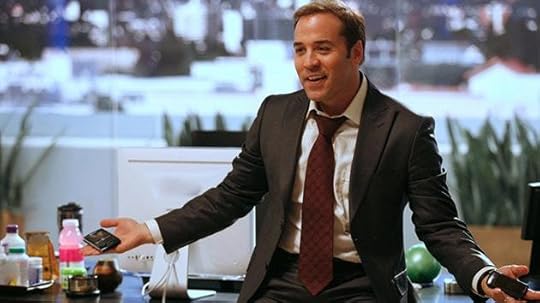 a.image2.image-link.image2-312-554 { padding-bottom: 56.19047619047619%; padding-bottom: min(56.19047619047619%, 311.2952380952381px); width: 100%; height: 0; } a.image2.image-link.image2-312-554 img { max-width: 554px; max-height: 311.2952380952381px; }
a.image2.image-link.image2-312-554 { padding-bottom: 56.19047619047619%; padding-bottom: min(56.19047619047619%, 311.2952380952381px); width: 100%; height: 0; } a.image2.image-link.image2-312-554 img { max-width: 554px; max-height: 311.2952380952381px; } For Entourage fans, you likely know that Ari Gold is based on Ari Emmanuel, CEO of Endeavour (WME’s parent company). Ari’s two high-powered brothers include Rahm Emmanuel (former White House Chief of Staff to President Obama and Mayor of Chicago) and Ezekiel, an oncologist and bioethicist whose new book, Which Country Has the World’s Best Healthcare, is apparently excellent.
**
A report from the Panorama Project aimed to focus on consumer "engagement" with books. 50% of people buy books for reasons other than reading them – gifts, display purposes, reference sources, etc.
Interesting findings: 61% of e-book readers and 70% of audiobook listeners reported multi-tasking when engaging with these book forms. ||The higher the engagement, the more activity across other media. || Word-of-mouth accounts for only 20% of purchases, suggesting there are multiple ways to reach potential book buyers. || Libraries, bookstores and online channels all reinforced each other, with more library card holders buying books during Covid than the general population.
**
There are several new apps that distill books, both classics and modern bestsellers, into brief, accessible summaries. You can listen to audio versions of summaries or read them on your phone.
Got fifteen minutes?
Instaread, Blinkist, GetAbstract, Joosr, 12Min, StoryShots, SumizeIt or CatchUp will summarize President Obama’s memoir (a mean feat) or Thomas Piketty’s views on capitalism. Seventeen million people use Blinkist alone.
The article also details the rise of podcast use – in 2020, more than 100 million Americans listened every month to podcasts and this year, podcast revenue is projected to be $1billion – and asks how different is that from an audio summary?
Bye for now. Thank you for joining me for this fourth issue of Letterbox. Please connect with me on Twitter, Instagram, Goodreads, Clubhouse: @helenwalsh, and my website.
February 1, 2021
Letterbox
“You should come to the village,” my friend David Layton said. “It’s where the severed head of Orpheus came ashore, still singing. It’s also where Golding wrote Lord of the Flies. So, it has good pedigree; it's a place to compose.”
I booked an Aeroplan seat four days later.
 a.image2.image-link.image2-336-1386 { padding-bottom: 24.242424242424242%; padding-bottom: min(24.242424242424242%, 336px); width: 100%; height: 0; } a.image2.image-link.image2-336-1386 img { max-width: 1386px; max-height: 336px; }
a.image2.image-link.image2-336-1386 { padding-bottom: 24.242424242424242%; padding-bottom: min(24.242424242424242%, 336px); width: 100%; height: 0; } a.image2.image-link.image2-336-1386 img { max-width: 1386px; max-height: 336px; } I’d read David’s remarkable memoir, Motion Sickness, years after it was published but shortly before meeting him. Our mutual friend Priscila Uppal loved to throw parties that involved karaoke and people from different parts of life. David and I got to know each other a little, occasionally for coffee and heated conversations about politics.
I started Pull Focus with Priscila’s help. She knew I wanted to get back to writing but had very little time between running two arts organizations. “You’re always going to be busy, it’s who you are,” she said. “You need to just do it. We’ll make a trade. You mentor me on raising money [for an institute on health, sport and art she wanted to start], and I’ll mentor you on a novel.”
Two years, and 1.5 drafts later, Priscila was diagnosed with a rare sarcoma and began a fierce battle with cancer that ultimately took her from us. We continued to meet, now at Annona restaurant in the Hyatt where Priscila would go to recover from lung surgeries and where I had my office, mostly to talk about life.
May 2017 and I was in Winnipeg producing an on-stage author talk with David for his novel The Dictator. He asked where things stood with my writing. In the middle of Portage Place mall, I began to cry. Too many years of working flat out, too little consistent writing time reflected in the novel drafts. His kindness pierced my armour.
Within three months, I’d re-arranged my life to create space to write. Two years later, after two more drafts and editorial meetings with David in Toronto and London, I found myself sitting in a taxi hurtling at top speed along tiny roads cut into steep mountains with the azure blue Aegean visible out my window. I was freshly landed in Mytilene, the capitol of the Greek Island of Lesvos, and headed towards the Molyvos I’d read so much about in David’s memoir.
“You’ve caused a big stir in the village. Everyone has eyeballs on you including the landlady and my godmother. . .who is also your neighbour.”
That night, I wound my way along the cobble stone path that ran from the apartment I’d rented half-way up Molyvos’s small mountain (topped by the Castle of Mithymna, built by the Byzantines to replace the one conquered by Achilles during the Trojan War), through the wisteria-shaded agora with its small shops and bookstores, and down to the twinkling lights of the harbour.
David spent summers growing up in Molyvos with his parents Aviva and Irving Layton, part of the sprawling Bohemian web of writers, artists, thinkers and their entourages that blew in from around the world for summers, or settled there, or who like David’s godfather Leonard Cohen came to visit from other Greek islands.
And indeed, that evening at a long table over many small plates of food and bottles of wine, people came and went. Bronwen and her husband showed up from India, Gary and Addie from Thailand, Aviva from Los Angeles, David and his partner Anastasia from London, her sister from Athens, her mother Jennifer from just outside the village.
During my time on Lesvos, Anastasia and her family generously folded me into their midst. In the mornings, David and I would have an editorial meeting over eggs at an open-air restaurant off the agora or at the water’s edge while Anastasia and her family engaged in lengthy negotiations about which beach we’d visit that day – dependent on the quality of the food the beach taverna offered – and what monastery or mountain town or pottery maker we would visit on the way.
Early afternoon, our caravan of small cars would roll up to the selected location and pick a table in the taverna, arrange chaise lounges on the beach nearby, order keftethes and tzatziki, crispy fried sardines and anchovies, salad topped with big hunks of feta, spanakopita or stuffed zucchini flowers. And olives, of course.
 a.image2.image-link.image2-344-1282 { padding-bottom: 26.833073322932915%; padding-bottom: min(26.833073322932915%, 344px); width: 100%; height: 0; } a.image2.image-link.image2-344-1282 img { max-width: 1282px; max-height: 344px; }
a.image2.image-link.image2-344-1282 { padding-bottom: 26.833073322932915%; padding-bottom: min(26.833073322932915%, 344px); width: 100%; height: 0; } a.image2.image-link.image2-344-1282 img { max-width: 1282px; max-height: 344px; } After some swimming (at least the ‘Canadians’ swam, the Greeks dipped their toes into water so warm it was a bath, and shuddered), then there be another round of food (kolokithia and melitsanes and more feta, maybe some calamari), this time with ouzo and wine, followed by reading (in my case writing), coffee and sweets, and before you knew it, it was 7ish, and the sun was losing its heat.
Time to pack everything up and head back to the village to shower and convene again at the harbour later for a grilled fish dinner or a film in the open-air cinema or a street festival of food and dancing.
Having a trusted editorial relationship with an experienced author/mentor is manna to a writer trying to finish their book. Someone to give tough advice, but also to hold your hand during the wobbles. Being able to have those conversations in a place so steeped in history and natural beauty like Lesvos is a gift to never be forgotten.
 a.image2.image-link.image2-469-1430 { padding-bottom: 32.79720279720279%; padding-bottom: min(32.79720279720279%, 469px); width: 100%; height: 0; } a.image2.image-link.image2-469-1430 img { max-width: 1430px; max-height: 469px; } The Show Must Go On
a.image2.image-link.image2-469-1430 { padding-bottom: 32.79720279720279%; padding-bottom: min(32.79720279720279%, 469px); width: 100%; height: 0; } a.image2.image-link.image2-469-1430 img { max-width: 1430px; max-height: 469px; } The Show Must Go OnAs Jane, my protagonist in Pull Focus, knows: the world around you may be burning but the show must always go on.
Over the past year, book fairs, library association meetings and in-person sales pitches have either been cancelled and/or moved digital, requiring publishers to get creative about new ways to market their books to those who will sell them.
Voilà, the author video.
Recently, my publisher asked me to send a short video to use in their outreach efforts. I was keen to do so but it required some quick planning.
Afraid to pass something on to my mother (who has complex health needs), I’ve remained essentially locked down since last March. My hair grew so long I could almost sit on it; without tint my eyebrows and lashes disappeared, and not one for much makeup, opening the mascara took a vice grip.
YouTube may be owned by the evil Google empire, but I’m telling you in the DIY arena, it rocks. Smitha Deepak taught me how to shape and pluck my own eyebrows. Curly Tay showed how to cut my own curly hair (unicorn method, anyone?). And, over at Masterclass, Bobbi Brown inspired me to spend so much money on new makeup that the Shoppers Drug Mart cashier (yes, this was an essential drug store run) looked down at the total and then back up at me, twice, before saying, “wow.”
Purolator brought me this bad boy:
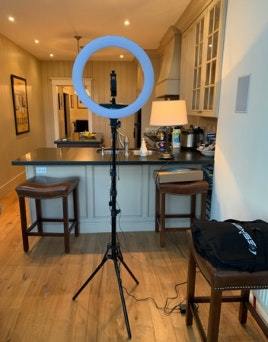 a.image2.image-link.image2-342-268 { padding-bottom: 127.61194029850746%; padding-bottom: min(127.61194029850746%, 342px); width: 100%; height: 0; } a.image2.image-link.image2-342-268 img { max-width: 268px; max-height: 342px; }
a.image2.image-link.image2-342-268 { padding-bottom: 127.61194029850746%; padding-bottom: min(127.61194029850746%, 342px); width: 100%; height: 0; } a.image2.image-link.image2-342-268 img { max-width: 268px; max-height: 342px; } And I was in business.
It turned out to be more fun than I imagined, and not only because it broke the daily routine. Now I’m kitted out, my partner suggests I should turn myself into a TikTok-er. But unless I can borrow a neighbour’s pet to shoot some dancing cat videos or convince the ladies in my Nia class of the merits of a Gen Z audience, I think I’ll just stick with my existing social media accounts and be ready for whatever Facebook and Instagram live events are to come. 💪 👩
Next issue of Letterbox: cover reveal!
**
Festivals.Sundance’s first big sale of this year’s festival, and it’s a record breaker. CODA, writer-director Siân Heder’s coming-of-age drama about a girl who is the only hearing person in her deaf family, was scooped up for $25million dollars, the largest sale in Sundance’s history eclipsing last year’s hit Palm Springs (which sold for $22.5MM).
Apple emerged victorious from the fierce bidding war with Amazon, sending another shot across the bow in its fight for video streaming market share. (Apple also set a record at Cannes last year for Emancipation, from director Antoine Fuqua, starring Will Smith, rumoured to be worth $120MM. And if you recall from the last issue of Letterbox, they are also adapting the Mick Herron novels).
Meanwhile, large-scale summer festivals like Glastonbury and Coachella have cancelled, and spring/summer book festivals such as Hay and Edinburgh are planning staged events that at a minimum will be broadcast digitally, but are hopeful that live audiences may be possible. (The UK is really ahead in vaccine roll-out.)
And in Canada, here’s hoping a combo of vaccination and herd immunity enables the big fall festival season (Kingston WritersFest, ThinAir, WordFest, Word on the Street, Ottawa International Writers Festival, Toronto International Festival of Authors, Vancouver Writers Festival) to welcome both digital and in-person audiences.
(If you need a pick-me-upper, I found this morning’s NYT article a helpful – and hopeful – context-setting read about why the vaccine development news is more positive than we might necessarily appreciate.)
News & Gossips.Walking With Ghosts, a memoir by actor Gabriel Byrne has been garnering strong reviews for being introspective and literary, instead of simply a celebrity book. Byrne has made over 70 films with a remarkable range of directors including Miller’s Crossing, The Usual Suspects and In the Name of the Father. If you also enjoy his smoldering Irishness, this Kirkus interview might be for you.
Meanwhile, actor Ethan Hawke has just published his second novel, which dramatizes the struggles of a Hollywood actor whose marriage has just ended because of his infidelity (!). He’s currently doing the book publicity rounds including this exclusive Canadian event with the Vancouver Writers Festival.
**
Writer/director Noah Baumbach will begin shooting a film adaptation of Don DeLillo’s National Book Award–winning 1985 novel, White Noise. The perfect apocalyptic book to revisit for these times! The movie will star Adam Driver and Greta Gerwig. Baumbach previously directed both actors in Frances Ha and most recently, was nominated for an Academy Award and a Golden Globe for his screenplay for Marriage Story, which also co-starred Driver.
**
Publisher’s Weekly reports that in 2020 independent publishers gained ground in the US, while the Big Five declined. With hardcover titles, the Big Five captured 89.1% of all available bestseller slots — down from 92.5% in 2019. They had an even greater loss in paperback, with their share of positions falling to 79%, versus 83.7% in 2019. I’ll be interested to read the 2020 Canadian Book Market sales data report when ready to see what happened in Canada.
Also interesting was the “pronounced disconnect between the books that grabbed the media’s attention and those that resonated with book buyers and readers.” Much attention was paid attention to titles such as Mary Trump’s Too Much and Never Enough, Elana Ferrante’s The Lying Life of Adults and Ibram X. Kendi’s How to Be an Antiracist all of which did land on PW’s lists, but they didn’t have staying power.
(Netflix just announced they’ll be adapting Kendi’s books. The power of a successful TV adaptation cannot be overestimated: Shonda Rhimes’ Bridgerton series for Netflix have skyrocketed those novels back to the top of the charts as did Margaret Atwood’s The Handmaid’s Tale.)
Meanwhile, debut novel Kiley Reid’s Such a Fun Age lasted fifteen weeks on the PW list as did one of my favourites – The Vanishing Half by Brit Bennett.
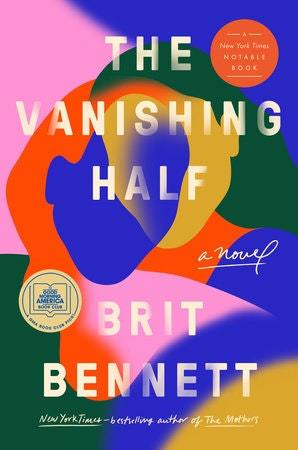 a.image2.image-link.image2-296-196 { padding-bottom: 151.00671140939596%; padding-bottom: min(151.00671140939596%, 295.9731543624161px); width: 100%; height: 0; } a.image2.image-link.image2-296-196 img { max-width: 196px; max-height: 295.9731543624161px; }
a.image2.image-link.image2-296-196 { padding-bottom: 151.00671140939596%; padding-bottom: min(151.00671140939596%, 295.9731543624161px); width: 100%; height: 0; } a.image2.image-link.image2-296-196 img { max-width: 196px; max-height: 295.9731543624161px; } The February 1st edition of Publishers Weekly (subscription-only) has a feature article interviewing multiple acquiring editors about how the #MeToo movement continues to impact the kinds of books publishers are buying. Many of the publishers argue they’ve always sought out books with strong female voices – the difference being now the media and market are showing greater interest and attention to those books.
The article also noted the rising interest in non-fiction, in books by women of colour, books where feminism is linked to wider social justice issues and novels in which characters find actionable ways to fight back against oppression.
At its core, Pull Focus wraps the #MeToo aspects of the entertainment industry in a wider exploration of gender and power. So, I found the PW article and in particular that last point very interesting.
In Hollywood, another long-alleged abuser is being called to account – this morning Westworld star Evan Rachel Wood came forward on Twitter and through Vanity Fair to name her former partner Marilyn Manson as her abuser, with other women quickly following suit. As always, questions arise about the entertainment power-brokers around Manson that have threatened and intimidated these women for years to stop them from coming forward.
Next issue of Letterbox: a look at changing business models and what that means for writers and the future of publishing, including Substack (the platform I use for this newsletter, one which many writers have adopted); Spotify’s expansion of ‘the books experience’; online reading such as Wattpad, and more.
One last photo of Greece, because why not, it’s frigid in Toronto and so I’ll dream of the warm Mediterranean sun on my skin as I dig into revisions to Pull Focus’s follow-up novel whose first draft I’ve written during this lockdown.)
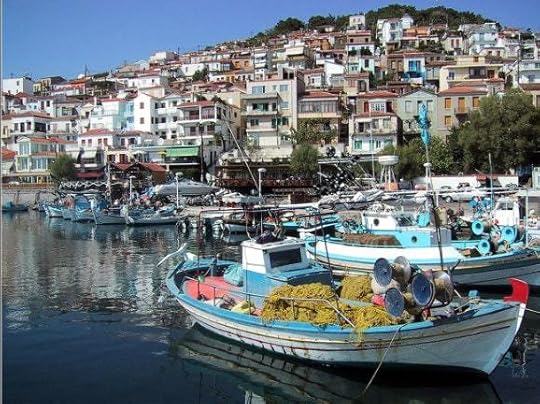 a.image2.image-link.image2-432-578 { padding-bottom: 74.74048442906575%; padding-bottom: min(74.74048442906575%, 432px); width: 100%; height: 0; } a.image2.image-link.image2-432-578 img { max-width: 578px; max-height: 432px; }
a.image2.image-link.image2-432-578 { padding-bottom: 74.74048442906575%; padding-bottom: min(74.74048442906575%, 432px); width: 100%; height: 0; } a.image2.image-link.image2-432-578 img { max-width: 578px; max-height: 432px; } Bye for now, thanks for joining me for this third edition of Letterbox!
January 18, 2021
Letterbox
I’ve been missing Ireland a lot, especially after my friend Aisling sent me pictures from the green fields of Cork in response to the last newsletter while I slipped along Toronto’s icy sidewalks trying to get my hour of pandemic lockdown exercise in.
 a.image2.image-link.image2-208-720 { padding-bottom: 28.870292887029287%; padding-bottom: min(28.870292887029287%, 207.86610878661088px); width: 100%; height: 0; } a.image2.image-link.image2-208-720 img { max-width: 720px; max-height: 207.86610878661088px; }
a.image2.image-link.image2-208-720 { padding-bottom: 28.870292887029287%; padding-bottom: min(28.870292887029287%, 207.86610878661088px); width: 100%; height: 0; } a.image2.image-link.image2-208-720 img { max-width: 720px; max-height: 207.86610878661088px; } Normally, I’m in Ireland two or three times a year. My father is buried in Mallow, County Cork, in a grave with his parents and brother William (an Irish thing). And I have a large extended family there.
My father was one of nine siblings (well, eight plus a cousin raised as a brother for some reason everyone in the town knew but no-one talked about, possibly involving the Black and Tans). Some of the siblings were baptized with the last name Walsh and some Pyne despite all eight having the same biological parents, none of which is very clear why except it involves the rearing of my grandfather, which is another one of those secrets held fast. (A very Irish kind of thing.)
I’ve travelled almost every square inch of Ireland on many, many driving trips with my sisters and cousins and aunts and uncles. I would say, with absolutely no confirmation bias, it’s one of the most special places on earth.
From the rolling hills and fishing villages of West Cork; to the wild Atlantic side with the breathtaking Cliffs of Moher, the outer-space topography of The Burren and the rousing music of Galway; to the haunting beauty of Donegal and across into Ballycastle in the North. And then of course the dynamism and energy of Dublin. (Yes, Cork cousins, I am indeed praising Dublin…)
 a.image2.image-link.image2-346-1300 { padding-bottom: 26.615384615384613%; padding-bottom: min(26.615384615384613%, 346px); width: 100%; height: 0; } a.image2.image-link.image2-346-1300 img { max-width: 1300px; max-height: 346px; }
a.image2.image-link.image2-346-1300 { padding-bottom: 26.615384615384613%; padding-bottom: min(26.615384615384613%, 346px); width: 100%; height: 0; } a.image2.image-link.image2-346-1300 img { max-width: 1300px; max-height: 346px; } But Ireland’s history is a complicated one, from the extreme hardships and sectarian strife fueled by British rule, to the immense power once wielded by the Catholic Church that enabled widespread sexual abuse of children and the ever-lasting shame of the Magdalene Laundries.
Republic of Shame, How Ireland Punished ‘Fallen Women’ and Their Children by journalist Caelainn Hogan is a remarkable book published last summer that explores how the Irish culture of shaming, secrets and ‘avoidance of public scandal’ permeated institutions and society to such deleterious effect.
At least in The Handmaid's Tale they value babies, mostly. Not so in the true stories here.
– Margaret Atwood
This Irish Times article by Diarmaid Ferriter – a very fine Irish historian whose books would be a great place to start if you want to untangle Irish history – includes a mini-documentary that accompanies Hogan’s book. Tough subject matter, but them’s the breaks when it comes to the historical treatment of women and girls around the world.
Succor.I was very fortunate to work on my novel Pull Focus during two writing residences at Tyrone Guthrie Centre at Annaghmakerrig in Co Monaghan, once the home of the great theatre director Sir William Tyrone Guthrie who, in 1971, bequeathed his entire estate to the Irish government to be used for the benefit of artists.
 a.image2.image-link.image2-206-726 { padding-bottom: 28.26923076923077%; padding-bottom: min(28.26923076923077%, 205.23461538461538px); width: 100%; height: 0; } a.image2.image-link.image2-206-726 img { max-width: 726px; max-height: 205.23461538461538px; }
a.image2.image-link.image2-206-726 { padding-bottom: 28.26923076923077%; padding-bottom: min(28.26923076923077%, 205.23461538461538px); width: 100%; height: 0; } a.image2.image-link.image2-206-726 img { max-width: 726px; max-height: 205.23461538461538px; } Located close to the border between North and South, and bequeathed at a time of deep political divide, both Arts Councils in Ireland worked hard for a decade to renovate the buildings and open the centre.
Many Irish writers you will have read – John Banville, Colm Toibin, Anne Enright, Paul Muldoon – have spent time at Annaghmakerrig.
Evelyn Conlon, a writer I met there has a new collection of stories out this spring. One story, about a woman who tried to shoot Mussolini, was published in Accenti, the ‘Canadian magazine with an Italian accent.’ I look forward to reading the collection.
Tyrone Guthrie also played a central role in building the arts in Canada. In the early 1950s, when Stratford was struggling in the face of railway industry pull-out, journalist Tom Patterson came up the idea of using the arts as economic development.
Armed with a whopping $125 city council grant, and assisted by Dora Mavor Moore, Patterson eventually connected with Guthrie, who was intrigued enough to pay a visit. Guthrie ended up staying as the Stratford Festival’s first Artistic Director, working hard to build the festival despite adverse economic headwinds.
 a.image2.image-link.image2-250-1160 { padding-bottom: 21.551724137931032%; padding-bottom: min(21.551724137931032%, 250px); width: 100%; height: 0; } a.image2.image-link.image2-250-1160 img { max-width: 1160px; max-height: 250px; }
a.image2.image-link.image2-250-1160 { padding-bottom: 21.551724137931032%; padding-bottom: min(21.551724137931032%, 250px); width: 100%; height: 0; } a.image2.image-link.image2-250-1160 img { max-width: 1160px; max-height: 250px; } That modest grant fuelled a remarkable success story which helped grow both Stratford and the Canadian theatre ecology. . .the return on investment has been profound. Here’s hoping community leaders will be energized by the same kind of visionary commitment as we rebuild from Covid. For example, I’d love to see something similar to Hay Festival established in Prince Edward Country or Simcoe or Perry Sound-Muskoka. (Stay tuned for my fiction podcast series debuting this year.)
For writers on this list, you might consider a residency at Annaghmakerrig. Write all day, take long walks in gorgeous countryside past donkeys and sheep before dinner, then sit down to an excellent meal over a properly laid table populated with the other artists in residence, where live music just might break out…
(Also, useful is this Poets & Writers list of world-wide residencies.)
Festivals.Festivals the world over are in a waiting game, holding off decisions about live vs digital versions this year as they watch the vaccine roll-out and peer at tea leaves.
But if 2020 proved anything, it was the need for dexterity. Interesting partnerships and digital cross-disciplinary projects have cropped up all over.
The Toronto International Festival of Authors – who recruited new Artistic Director Roland Gulliver from Scotland just before the pandemic – is taking part in LitFestBergen, a new project uniting festival and literary centres around the world.
Video footage will stream from 13 countries (from India to Jamaica to Afghanistan to Norway to Canada and beyond) with each presenting their own town, culture and lifestyle, followed by writers and artists linked in a ‘best Eurovision Song Contest style’ for a twelve-hour non-stop extravaganza.
Can’t quite get my head around the format – but thank goodness for that. It would be great to be startled by a literary event.
***
I’ve had the pleasure of attending the Sundance Film Festival in Park City, Utah the past few years but sadly we won’t be packing up skis and flying out this month. Nor can we digitally attend, given the feature films are geo-gated to US residents. (Yes, there’s the VPN option but tickets need to be bought by a credit card billed to a US address.)
 a.image2.image-link.image2-610-1240 { padding-bottom: 49.193548387096776%; padding-bottom: min(49.193548387096776%, 610px); width: 100%; height: 0; } a.image2.image-link.image2-610-1240 img { max-width: 1240px; max-height: 610px; }
a.image2.image-link.image2-610-1240 { padding-bottom: 49.193548387096776%; padding-bottom: min(49.193548387096776%, 610px); width: 100%; height: 0; } a.image2.image-link.image2-610-1240 img { max-width: 1240px; max-height: 610px; } Instead, I’ve just finished the first draft of a screenplay set at Sundance and am catching up on films missed last year or re-watching favourites. Some suggestions: Last Black Man in San Francisco, Palm Springs, The Forty-Year-Old Version, Crip Camp which won the audience award at Sundance and best feature at the IDA Documentary Awards, and Minari (released next month).
Sundance’s Talks & Conversations are available globally this year. One I’m looking forward to is #SundanceBigConversation with filmmaker Raoul Peck (I Am Not Your Negro) and Sundance director Tabitha Jackson exploring white supremacy, history, creative expression and Peck’s personal journey.
News & Gossips.Literary Adaptations. Apple TV+ is adapting two books by one of my favourite writers, Mick Herron. Currently shooting in the UK, six episodes will be made of Slow Horses and six of Dead Lions, with an all-star cast including Gary Oldman, Kristin Scott Thomas, Jack Lowden, Olivia Cooke and Jonathan Pryce.
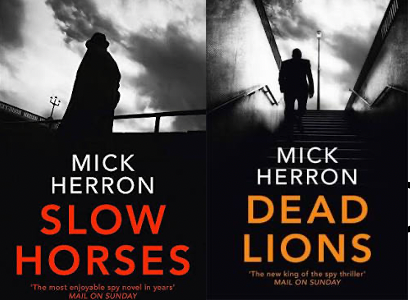 a.image2.image-link.image2-300-410 { padding-bottom: 73.17073170731707%; padding-bottom: min(73.17073170731707%, 300px); width: 100%; height: 0; } a.image2.image-link.image2-300-410 img { max-width: 410px; max-height: 300px; }
a.image2.image-link.image2-300-410 { padding-bottom: 73.17073170731707%; padding-bottom: min(73.17073170731707%, 300px); width: 100%; height: 0; } a.image2.image-link.image2-300-410 img { max-width: 410px; max-height: 300px; } Herron’s books have won nearly every major crime fiction prize in the UK; like fellow ‘spy’ writer John Le Carré, his writing (deadly smart and viciously funny) is amongst the best, regardless of genre (including ‘literary’).
Meanwhile, MTV recruited publishing industry veteran Christian Trimmer to relaunch MTV Books, dormant for several years, in partnership with Simon & Schuster, to accelerate the book to tv/film pipeline.
***
A class action lawsuit alleging anti-trust behaviour was filed in New York against Amazon for their eBook monopoly – somewhere between 83-90% of the US market depending on the source – by the same law firm that successfully sued Apple and five major publishers for price fixing in 2011.
***
Foment continues in the publishing community about whose books deserve to be published. Last week, US Senator Josh Hawley saw his book cancelled; while more than 250 authors, agents, booksellers and publishers signed an open letter urging publishers to not sign book deals with members of the Trump administration or anyone who supported the Capitol Hill attack. And of course there’s Jordan Peterson…
Twitter is home to no end of raging about either the prevalence or non-existence of cancel culture, should that be how you want to invest your time and energy.
***
In Canadian lit agency news, Olga Filina, Ali McDonald and Cassandra Rodgers, formerly at the Rights Factory, launched 5 Otter Literary, a full-service, international literary agency. || Max Alexandre joined Westwood Creative Artists as Literary & Podcast Agent. || Léonicka Valcius was promoted to Literary Agent at TLA.
***
Publishers Marketplace reports that 2020 trends showed that US publishing deals were up ⬆8% overall, after holding roughly flat for the previous 4 years; UK deals were ⬆ 4.6% but deals by Canadian publishers were ⬇ 2.3%. (I’m curious what percentage of Canadian indie presses and/or agents report to Publishers Marketplace. I read their daily bulletins and I see some deals listed, but not all I suspect.)
Adult fiction sales showed most growth, particularly Women’s Fiction and Debut Fiction; in non-fiction, history/politics/current affairs and business/personal finance showed momentum while cookbooks slid; in children/YA the biggest growth in deals was for middle grade fiction and children’s graphic novels.
***
And finally in this edition of Letterbox, some wonky stats to answer questions asked about Bookselling in Canada. (Goodbye to those whose fingers just reached for the delete button…)
In 2020, juvenile and young adult titles continued to dominate, capturing 40.5% of the English print market, while non-fiction was 32.5% and fiction 25.5%.
On the topic of Bestseller Lists. . .they differ because they’re compiled from different data. For example, Booknet Canada (reprinted in some media) tracks point-of-sales data from over 2,000 retail outlets, covering an estimated 85% of the Canadian trade print book market.
Meanwhile, CBC Books uses data from close to 300 independent bookstores, courtesy of Bookmanager.
 a.image2.image-link.image2-186-1024 { padding-bottom: 18.1640625%; padding-bottom: min(18.1640625%, 186px); width: 100%; height: 0; } a.image2.image-link.image2-186-1024 img { max-width: 1024px; max-height: 186px; }
a.image2.image-link.image2-186-1024 { padding-bottom: 18.1640625%; padding-bottom: min(18.1640625%, 186px); width: 100%; height: 0; } a.image2.image-link.image2-186-1024 img { max-width: 1024px; max-height: 186px; }
Riddle me this: what percentage of the retail book market do indie bookstores vs Amazon vs Indigo capture in Canada?
That’s about as clear as the NYTimes Bookseller list compilation, and I did try to dig. I suspect the following breakdown from 2016 is similar still today, although I’d bet that Amazon has a bigger marketshare now:
The Canadian book retail market share in 2016 includes: 33% Amazon, 38% Indigo/Chapters/Coles, 18% non-traditional bookstore market (e.g., Walmart, Costco, drug store chains, supermarkets, and hardware chains), 5% Library wholesalers, 6% independently operated bookstores.
It will be interesting to watch if/how this pie is re-divided as independent bookstores expand their online sales capacity, including via Indiebound.
Although a long read, I found this research paper from 2019 trying to puzzle out the breakdown of the Canadian children’s book market very informative on just how difficult it is to answer what seems like a simple question.
Bye for now, thanks for joining me for the second edition of Letterbox. Please:
January 1, 2021
Letterbox
(and, yes, an explanation of why you’re receiving this…)
When I was growing up, my Scottish mother always insisted that we have a ‘first foot’ through the front door just after the stroke of midnight on New Year’s to bring good luck for the coming year.
Not just any pair of feet would do, mind you. They required a tall, dark-haired man to be walking himself across the threshold, preferably a lump of coal in hand, although this latter detail was often difficult to achieve in the Toronto suburb of my childhood.
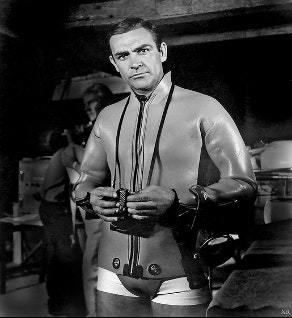 a.image2.image-link.image2-443-406 { padding-bottom: 108.90410958904111%; padding-bottom: min(108.90410958904111%, 442.1506849315069px); width: 100%; height: 0; } a.image2.image-link.image2-443-406 img { max-width: 406px; max-height: 442.1506849315069px; }
a.image2.image-link.image2-443-406 { padding-bottom: 108.90410958904111%; padding-bottom: min(108.90410958904111%, 442.1506849315069px); width: 100%; height: 0; } a.image2.image-link.image2-443-406 img { max-width: 406px; max-height: 442.1506849315069px; } Inevitably, a neighbour was recruited for the job, hand on the knocker as Dick Clark counted down on the television and we poised to sing ‘Auld Lang Syne.’ (And, sadly, I don’t remember him ever looking like Sean Connery.)
Other families on our street didn’t seem to comprehend the havoc that would be wreaked if the gods went unappeased, so even from an early age I understood it to be a tradition the family brought during the emigration trek, along with square sausage, a propensity to cry at the bagpipes, and sayings like ‘haud yer wheesht’ that scattered blank looks everywhere when used among civilians.
Over the past few days, in this dislocating year of social distance, I’ve been reading about the history of ‘first-footing.’ In Scotland, it’s part of Hogmanay – the New Year’s Eve celebrations.
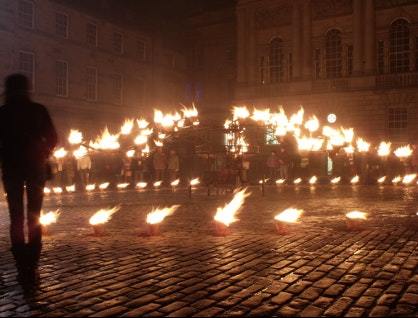 a.image2.image-link.image2-388-510 { padding-bottom: 76.07655502392345%; padding-bottom: min(76.07655502392345%, 387.99043062200957px); width: 100%; height: 0; } a.image2.image-link.image2-388-510 img { max-width: 510px; max-height: 387.99043062200957px; }
a.image2.image-link.image2-388-510 { padding-bottom: 76.07655502392345%; padding-bottom: min(76.07655502392345%, 387.99043062200957px); width: 100%; height: 0; } a.image2.image-link.image2-388-510 img { max-width: 510px; max-height: 387.99043062200957px; } Some argue the tradition originated after the Viking invasion of the British isles, when the arrival of a blond stranger at the door would cause fear and alarm. There are also parallels to Samhain, a Gaelic festival marking the end of the harvest and the beginning of winter, when the boundary between this world and the otherworld thinned and the pagan gods were appeased with offerings of food and drink and verse.
Like much of history, the exact origins are mutable. What is certain: the sense of community it evoked, the house full of ringing laughter and good cheer.
As we turn the corner into 2021, I wish for us all a renewed sense of hope and expansion, along with great big dinners shared with extended family and friends, the ability to wander aimlessly among the shelves in your local bookshop and the much-anticipated return to live theatre and festivals.
In my little world, the most important thing about 2021 – other than the anticipated jab in the arm – is the publication of my first novel, Pull Focus!
I’ve wanted to be a writer from the time I read Alice Munro’s Lives of Girls and Women at thirteen, although I was side-tracked there for a few decades with magazine publishing, film writing/producing and running arts organizations.
But first loves can’t be denied, and this new bi-monthly newsletter will share news of my novel (+upcoming fiction podcast series), curated suggestions from the book and film festival worlds, and news and gossip (publishing + entertainment), because who doesn’t like a little gossip with their cup of tea and biscuit?
Pull Focus launches.I’m both excited and nervous that Pull Focus launches this fall – September 7th in Canada and the US and a month later, October 7th, in the UK.
The description from the publisher’s catalogue: Jane has been appointed interim director of the Toronto International Film Festival after her boss is removed for sexual harassment. Knives are out all around her. At the same time, her partner, a fund manager, disappears and strange women appear uttering threats about misused funds. Yet the festival must go on. Pull Focus wraps the #metoo issues in the entertainment industry in a thrilling story.
I’m delighted to be with ECW Press, Canada’s largest independent publisher. By the time the novel hits booksellers, it’ll have been two years since we signed the contract and many more years since I first started writing it, sandwiched by fifty-hour work weeks into weekends and writing retreats in Georgian Bay, Edinburgh and Ireland.
I’m enormously grateful to the writers who so generously read drafts of the novel and gave feedback: David Layton, Rabindranath Maharaj, Anna Porter and the late and greatly missed Priscila Uppal. And for the Diaspora Dialogues writing community whose talent and friendship inspires me.
Pull Focus has gone through the edit and copyedit; I’m currently waiting for the page proofs and the revised cover image artwork – which I’ll share with you the next newsletter, along with more details and the fiction podcast seriesthat is a prequel to the book, taking place seven years earlier.
My Scottish grandmother explained the concept of fate this way:
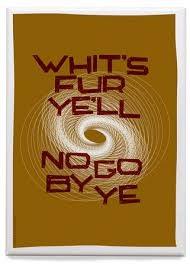 a.image2.image-link.image2-350-250 { padding-bottom: 140%; padding-bottom: min(140%, 350px); width: 100%; height: 0; } a.image2.image-link.image2-350-250 img { max-width: 250px; max-height: 350px; }
a.image2.image-link.image2-350-250 { padding-bottom: 140%; padding-bottom: min(140%, 350px); width: 100%; height: 0; } a.image2.image-link.image2-350-250 img { max-width: 250px; max-height: 350px; } I very much hope you’ll keep me company on this journey, first footing me as I launch myself as an author.
The Magical (and Threatened) World of Festivals.
“Etymologically the term festival derives ultimately from the Latin festum. But originally Latin had two terms for festive events: festum, for “public joy, merriment, revelry,” and feria, meaning “abstinence from work in honor of the gods.”
– Alessandro Falassi, Time Out of Time: Essays on the Festival
I adore festivals.
The thrill of discovering new writers or filmmakers or theatre artists. Rushing from one event to the other, then decompressing over a glass of wine later to figure out what it all meant. Conversations with strangers in line, the hush that comes over the audience as the trailers or introductions start, the titillating exhaustion of the creative brain being bombarded with images, ideas, questions.
From Toronto International Film Festival in September to Toronto International Festival of Authors in November to Sundance Film Festival in January and beyond, my year is mapped out in festivals.
But above all else, my favourite time of year is August in Edinburgh, where I have spent the past dozen years, originally at the invitation of the British Council, who kindly hosted me as an international programmer for the first few years.
Multiple festivals take over Edinburgh in August, including the ones I mostly attend: Edinburgh International Book Festival, Edinburgh International Festival and the Edinburgh Fringe.
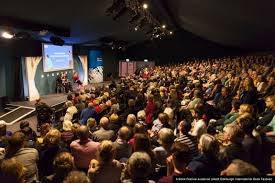 a.image2.image-link.image2-326-489 { padding-bottom: 66.54545454545455%; padding-bottom: min(66.54545454545455%, 325.40727272727275px); width: 100%; height: 0; } a.image2.image-link.image2-326-489 img { max-width: 489px; max-height: 325.40727272727275px; }
a.image2.image-link.image2-326-489 { padding-bottom: 66.54545454545455%; padding-bottom: min(66.54545454545455%, 325.40727272727275px); width: 100%; height: 0; } a.image2.image-link.image2-326-489 img { max-width: 489px; max-height: 325.40727272727275px; } To give you a sense of scale: the 2019 Edinburgh Fringe alone, billed as the world’s third-largest ticketed event after the Olympics and the World Cup, featured over 3,800 shows in 323 venues across the city; brought together artists, arts industry, media and audiences from over 150 countries; issued 3 million tickets; accredited 1,661 producers, programmers, bookers, talent agencies, festivals and others from 54 countries as well as 1,000 media.
The Edinburgh Book Festival, which transforms Charlotte Square Gardens into an intimate tented village complete with cafés, pub and bookstore, hosted 250,000 people.
The majority of the audiences are Scottish – from 45-80% depending on the festival – followed by the rest of the UK. International audiences make up a small percentage. But still, 2019 saw the busiest summer ever at Edinburgh airport, with 1.47million passengers. And this despite so much of the British audience come via the excellent train and bus system. (They like to complain about it, but they’ve never seen what passes for public transit in Canada…)
Of course, this scale raises questions and concerns about the environmental impact, and about the burden on local residents who face gridlock in every way in August.
The festivals are more environmentally conscious and overtly political than any I’ve attended elsewhere, both in terms of policy/procedure and content, including this excellent one-woman show, Sea Sick, I attended by Canadian journalist Alanna Mitchell, one of the 25 artists presented by CanadaHub.
What the future holds post-Covid is of course unclear. We are all zoomed out and people do not want to pay for digital content. Nor have digital author talks yet proven themselves effective in translating into book sales.
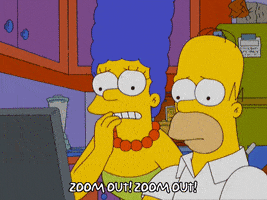 a.image2.image-link.image2-277-369 { padding-bottom: 74.9063670411985%; padding-bottom: min(74.9063670411985%, 276.40449438202245px); width: 100%; height: 0; } a.image2.image-link.image2-277-369 img { max-width: 369px; max-height: 276.40449438202245px; }
a.image2.image-link.image2-277-369 { padding-bottom: 74.9063670411985%; padding-bottom: min(74.9063670411985%, 276.40449438202245px); width: 100%; height: 0; } a.image2.image-link.image2-277-369 img { max-width: 369px; max-height: 276.40449438202245px; } Cultural festivals everywhere are struggling to figure out what happens in 2021 – will the vaccine inoculation happen fast enough? What will people’s comfort levels be even if it does?
At best, we’re likely looking at some kind of mixed live-digital model for this coming year. In Edinburgh, the current 2 metre rule puts the viability of many venues into question, especially for the Edinburgh fringe which are generally the least ventilated and the most squished. Organizers have focussed on 2022, the 75th anniversary of the Fringe.
But here’s hoping the other festivals in Edinburgh and elsewhere find a way to produce in-person events in 2021. I say this as both an audience member who’s ready to go back (masked) into the theatre, but also as a writer who very much hopes to do live book talks and meet readers this fall.
News & Gossips.Booksellers are fighting hard to survive Covid, with ‘buy indie’ social media campaigns, calls for help, pressure on government to be listed an essential service, and crowd fundraising.
Let’s hope someone other than Amazon is left standing; if not, it’d be a whole lot worse than Penguin Random House buying Simon & Schuster.
“If it’s correct to worry about a merged company that publishes perhaps 33 percent of new books, then surely it’s correct to worry more about the fact that Amazon now sells 49 percent of them.”
**
“Flat is the new up.” Hollywood-speak for the continuing freefall of tv/film business models, whether that’s the death of cinema, or viewership erosion for broadcast, cable and pay. Variety ranks the 2020 winners and losers. (And yes, Donald Trump’s crackpot antics were a godsend to cable news…)
**
Literary Adaptations continue to be snapped up by streaming services, with Canadians riding the trend. Deepa Mehta and Shyam Selvadurai’s adaptation of Funny Boy aired in December on CBC Gem in Canada, and on Netflix in the US, UK, Australia and New Zealand, distributed by Ava Duvernay’s ARRAY films.
Michael Lista’s Toronto Life Article “The Sting” is being produced by Robert Downey Jr’s production company for Apple; Hulu’s betting on Sean Michael’s The Wagers and Amy Stuart’s bestselling Still Mine series is set to thrill TV viewers as much as readers.
**
Reese rolls-on! Hello Sunshine, Reese Witherspoon’s production company, just announced the purchase of SKR Productions, marking her push into unscripted programming, with a desire for "narratives that explore the full range of women’s lived experiences.”
Her impact on scripted content is already massive, producing projects ranging from Big Little Lies to Gone Girl to Wild, advocating for female representation on and behind the camera.
Another example of Witherspoon’s influence? Her book club, “publishing’s secret weapon,” picked Where the Crawdads Sing, a debut novel by 70-year-old author Delia Owens, for its September 2018 selection, a month after the novel was published with an initial print of 27,500 (high by Canadian standards, but not in the US). The book shot to the top of the best-seller lists, where it has mostly remained, with over 7 million books sold and a film adaptation in the works (yes, by Hello Sunshine).

November 20, 2020
Letterbox
Welcome to Letterbox by me, Helen Walsh. Writer (PULL FOCUS, ECW 2021); President @ddialogues. Producer and convenor of conversations.
Sign up now so you don’t miss the first issue.
In the meantime, tell your friends!



